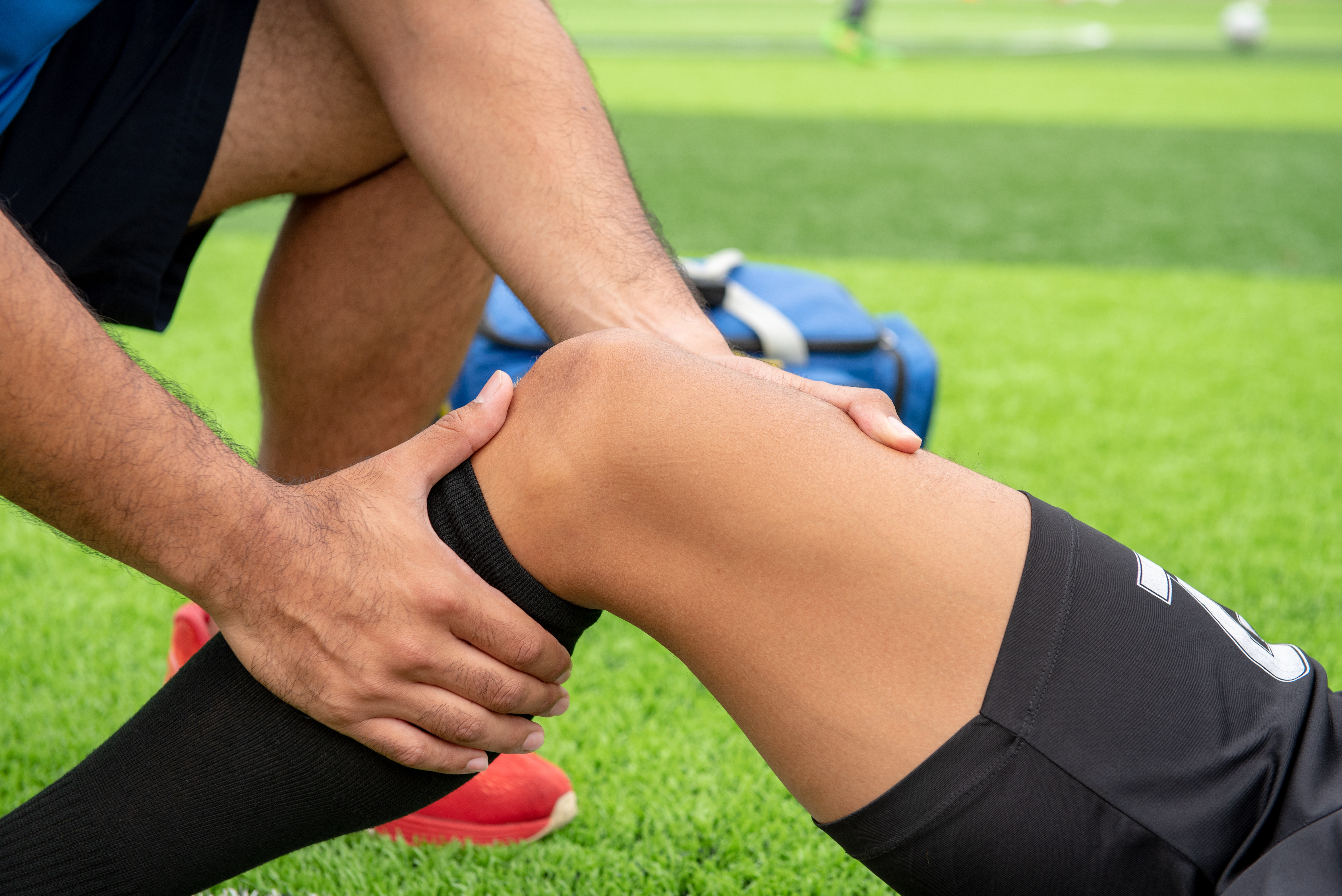Our bodies move dynamically and simultaneously in three main directions during sports activities: front to back, side to side, and in a twisting or rotational motion. Injuries can happen when there is a deficit in the body’s ability to control all of those movements at the same time throughout the kinetic chain. Of these injuries, the most common is a tear of the anterior cruciate ligament (ACL). The ACL, located in the knee, connects the bones of the lower-leg and thigh together and has the main job of controlling the complex motion of the knee. An injury to this area usually occurs in side to side and/or twisting motions such as cutting, pivoting or landing incorrectly from a jump or hop. ACL injury rehabilitation may require reconstructive surgery to replace the ligament with a tissue graft. A full recovery and return to sport from an ACL injury can vary from six to 12 months. ACL reconstruction surgery comes with extensive recovery time, and the ACL physical therapy process is crucial to an athlete’s successful return to sport.
Torrey Foster, PT, DPT, OCS, FAFS, CSCS – a physical therapist and sports specialist at Spooner Physical Therapy in Scottsdale, has an extensive personal and professional background in ACL physical therapy and ligament reconstruction. His own experience with ACL tears in both knees has inspired him to fully understand and appreciate the process of rehabilitation from a patient’s perspective. He leads patients through a comprehensive ACL physical therapy program cultivated by the Spooner team, with the focus on full recovery and training patients to confidently return back to their respective sport faster and stronger.
Program Phases for ACL Injury Rehabilitation
Dr. Foster, along with a team of therapists and orthopedic surgeons in the area, partnered together to help develop Spooner Physical Therapy’s Lower Extremity Return to Sport Program. After a year of research and collaboration from professionals in the region, a program specifically designed to functionally test athletes and their movements through progressively complex activities emerged. Through this testing program, the most effective rehabilitation for patients also resulted. This program is six months long with seven different phases. The goal is to pursue optimal rehabilitation by balancing tissue healing with rebuilding strength, motion, and safe return to sport capabilities.
The early phases of the testing and rehab program focus on controlling pain, improving motion, successfully completing basic activities of daily living, and establishing neuromuscular control. By phase three, the athlete progresses to impact preparation. The athlete must test out of each phase by completing activities in all three planes of motion before progressing through the program to more difficult tasks.
Once the athletes demonstrate proficiency in earlier tasks, they are typically ready to jog and begin light impact and jumping activities at twelve weeks post-surgery (phase four). Following the initiation of jogging, the remaining phases build on each other to prepare an athlete for successful sprinting, cutting, and return-to-sport preparation. The final phase in the program includes high–level performance testing which ensures the athlete has the comfort, capabilities, and confidence to safely return to the demands of his or her sport.
The Lower Extremity Return to Sport Program tests the entire biomechanical chain as it connects to the knee, including foot, ankle, hips, core and more. The phases test all planes of motion to represent the full demands of the body in function. Throughout the six-month timeline, strength, balance, muscle endurance, coordination, propulsion, and deceleration are incorporated to highlight every necessary movement and prepare the body to return to its normal demands.
Additional Benefits of ACL Physical Therapy
The program can also be adapted for other lower body injuries in addition to the knee, or used as a system to prevent injury. Our therapists will identify areas that may be at risk for injury through evaluation. They will then provide an exercise program targeted to the area that can either be used for rehabilitation or to prevent risk of injury.
“Sometimes we don’t know where our greatest deficits are, and that’s where professionals at Spooner Physical Therapy can help guide that person to minimize the risk of injury or to help him or her to successfully return from an injury,” Dr. Foster says regarding the program.
Torrey Foster is passionate about ensuring every patient receives the best ACL physical therapy possible by the team of therapists at Spooner Physical Therapy. Each ACL injury is treated and tested in a unique series of movements based on the needs of the patient. An athlete recovering from injury or seeking to prevent injury can utilize this program to prepare for and return to his or her sport. It is designed to challenge the athlete to return to activity or sport at their highest level of performance.
Learn more about the ACL Injury Rehabilitation Program at Spooner Physical Therapy. Ready to schedule an appointment? Click here to schedule an appointment or complimentary movement screen with a Spooner physical therapist at one of our locations throughout the valley.

